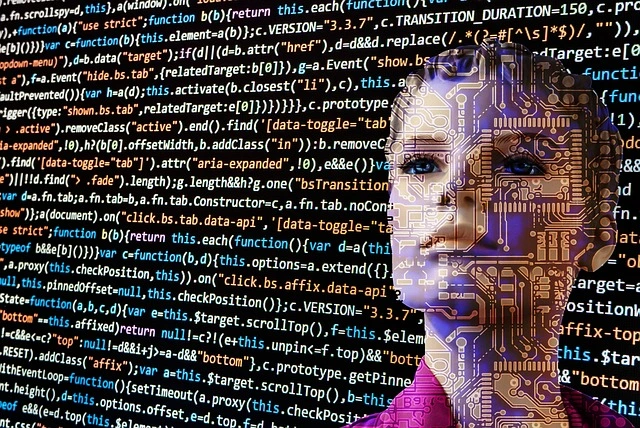In moment’s digital age, where technology permeates every aspect of our lives, the healthcare sector has experienced a significant metamorphosis. With the integration of electronic health records (EHRs), telemedicine, and colorful other digital systems, assiduity has come more effective and accessible. Still, this rapid-fire digitization has also opened up new avenues for cyber pitfalls, making healthcare cybersecurity a consummate concern. Enter Artificial Intelligence (AI), an important supporter in the ongoing battle to guard sensitive medical data and ensure patient trust. In this article, we’ll discuss the vital part of AI in safeguarding healthcare cybersecurity
Preface
In a period where data breaches and cyberattacks dominate captions, securing healthcare cybersecurity has come a critical imperative. The vulnerability of case records, personal exploration, and sensitive medical information necessitates innovative approaches to cover against implicit pitfalls.
The Evolving Landscape of Healthcare
Advancements in medical technology have led to the wide relinquishment of digital systems within the healthcare sector. Electronic health records (EHRs) have replaced traditional paper-grounded lines, allowing for streamlined information sharing and bettered patient care. Telemedicine has enabled remote consultations, enhancing availability for cases worldwide. While these advancements offer unequaled benefits, they also expose healthcare assiduity to cyber pitfalls.
The Growing trouble of Cyberattacks
The healthcare sector has decreasingly come a target for cybercriminals seeking to exploit vulnerabilities and profit from stolen data. Ransomware attacks can cripple healthcare installations, causing dislocations in patient care and putting lives at threat. Likewise, the value of medical data on the black request makes healthcare associations economic targets.
AI A Shield Against Cyber Threats
Artificial Intelligence has surfaced as a redoubtable tool in fortifying healthcare cybersecurity. Its capability to dissect vast quantities of data in real time enables rapid-fire trouble discovery and response. Then are some ways AI is making a difference
Early trouble Discovery
AI algorithms continuously cover network business, stoner geste, and system anomalies to identify implicit pitfalls at the foremost stages. This visionary approach helps help cyberattacks before they can induce significant damage.
Anomaly Discovery and Geste Analysis
AI-powered systems establish birth patterns of stoners and system geste. diversions from these patterns spark cautions, allowing cybersecurity brigades to probe and alleviate implicit breaches.
Robust Authentication and Authorization
AI-driven authentication styles, similar to biometric recognition and behavioral analysis, give enhanced security for penetrating sensitive medical information. This ensures that only the authorized labor force can pierce patient records and critical data.
Enhancing Medical Device Security
Medical biases are essential factors of ultramodern healthcare, but they can also serve as entry points for cyberattacks. AI can cover and secure these biases, icing they operate safely and remain defended from unauthorized access.
AI-Powered Data Encryption
AI plays a vital part in cracking sensitive healthcare data, rendering it undecipherable to unauthorized druggies. This redundant subcaste of security minimizes the threat of data breaches and unauthorized data access.
The Mortal Factor Training and mindfulness
While AI offers advanced cybersecurity results, mortal involvement remains pivotal. Healthcare staff must suffer rigorous training to fete and respond to implicit cyber pitfalls. This includes understanding social engineering tactics and rehearsing safe online geste.
Regulatory Compliance and AI
Healthcare is a largely regulated assiduity, with data protection laws similar to HIPAA assessing strict conditions. AI assists associations in maintaining compliance by automatically relating and addressing implicit vulnerabilities.
The Cost- Effectiveness of AI results
Contrary to misconceptions, enforcing AI-driven cybersecurity results can be bring-effective in the long run. By precluding expensive data breaches and reducing time-out, AI helps healthcare associations save substantial fiscal coffers.
The Future of Healthcare Cybersecurity
As technology continues to evolve, AI’ll play a decreasingly vital part in shaping the future of healthcare cybersecurity. With the integration of AI-driven defenses, healthcare associations can stay one step ahead of cyber pitfalls and ensure the safety of patient data.
Conclusion
In a digitally connected world, healthcare assiduity faces unknown challenges in securing patient data and maintaining functional durability. Artificial Intelligence stands as a stalwart guardian, furnishing innovative and adaptive results to offset the ever-evolving geography of cyber pitfalls. By embracing AI-driven cybersecurity measures, healthcare associations can fortify their defenses and ensure the confidentiality and integrity of sensitive medical information.
FAQs
How does AI contribute to early trouble discovery?
AI analyzes network and stoner geste patterns, relating diversions that could indicate implicit cyber pitfalls, enabling nippy preventative action.
Can AI help all types of cyberattacks?
While AI is important, no system can help all cyberattacks. still, AI significantly reduces the threat and helps by early discovery and mitigation.
What part does mortal training play in AI-driven cybersecurity?
Mortal training is essential to fete social engineering tactics, practice safe online geste, and unite effectively with AI systems for optimal cybersecurity.
Are AI results affordable for lower healthcare providers?
Yes, AI results can be acclimatized to fit colorful budgets and requirements, making them accessible indeed to lower healthcare providers.
How can healthcare associations stay streamlined with evolving cybersecurity regulations? AI assists in Maintaining nonsupervisory compliance by automatically relating vulnerabilities and icing adherence to cybersecurity regulations.



